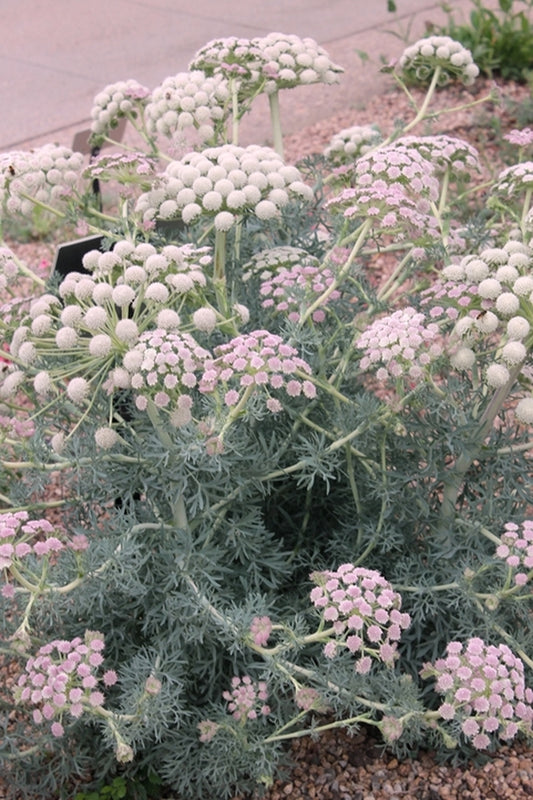Seseli needs dry feet, and does well in rock gardens. It really likes heat and full sun. The long-stemmed flowers, which appear in summer and last through the fall, make great cut flowers.
-
Seseli gummiferum
Item #: 3117
Zones: 5a to 9b
Dormancy: Winter
Height: 30" tall
Culture: Sun
Origin: Crete, Greece, Turkey
Pot Size: 3.5" pot (24 fl. oz/0.7 L)
Regular price $20.00Regular priceUnit price per
More Information About Seseli
What a cool name...Moon Carrot. The genus Seseli is related to carrots and dill (family Apiaceae) which is obvious once you see the umbelliferous flowers, which look a lot like Queen Anne's Lace. There are roughly 140 species of seseli that are distributed throughout Europe from England to Russia and China south through the Balkans and Aegean region into Turkey, Iran and India.
Seseli is planted all over Europe as an ornamental plant, and it is also grown in several countries as an economic crop. In the garden seseli is grown for its silvery-blue, fern-like evergreen foliage and white or rose-tinged flowers. In Turkey, seseli leaves are dryed and used as animal fodder as well as using leaf extracts medicinally for anti-bacterial and anti-inflammatory properties. In China, Seseli meirei root is used as a pain reliever. The ancient Greeks also used it as a medicinal plant to treat food poisoning and venomous snake bikes. Some species such as Seseli libanotis have leaves that may be eaten if cooked, and other species like Seseli gummiferum have a gummy sap in the stem that can be used in cooking.
Seseli (Moon Carrot) Growing Conditions
Moon carrot is a plant that needs dry feet, and does well in rock gardens and other xeriscape situations. It really likes heat and full sun. The long-stemmed flowers, which appear in summer and last through the fall, make great cut flowers. Seseli is a short-lived perennial (long-lived in lean soils and short-lived in rich soils), but it is self fertile and re-seeds around the garden to maintain itself. Bees, butterflies and other insects are attracted to the flowers, and it is a good plant for making honey.
Companion Plants
Try combining Seseli with other summer plants like Buddleia, Lantana, Salvia or Perovskia. Or you could make a cool solar system garden with Moon Carrot, Venus fly trap (Dionaea), Carolina Moonlight Baptisia, Brushfire Moon Iris, Harvest Moon Echinacea, Gethsemane Moonlight Chrysanthemum, Jupiter's Beard (Centranthus), Blue Star Creeper (Laurentia), Stars and Stripes Crinum, Tiny Star Yucca, Pink Star Aster, Dark Star Eucomis, Starry Eyes Nierembergia, Arizona Star Agave, Superstar Hymenocallis, Star Burst Zephyranthes, Sally's Comet Kniphofia, Sunshine Veronica, Sunflower (Helianthus), Prairie Sunset (Helopsis), Texas Sun Calylophus, and many others.


